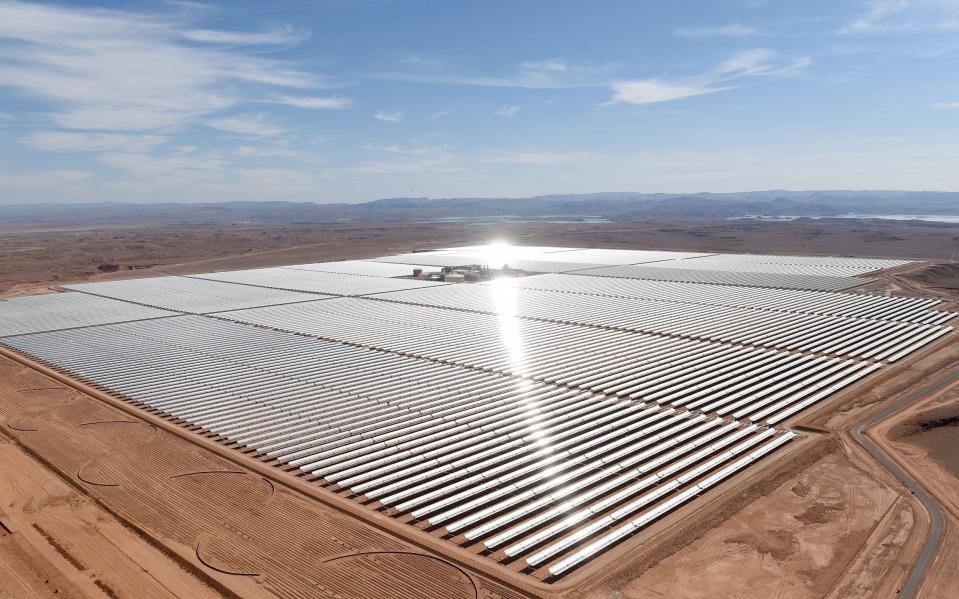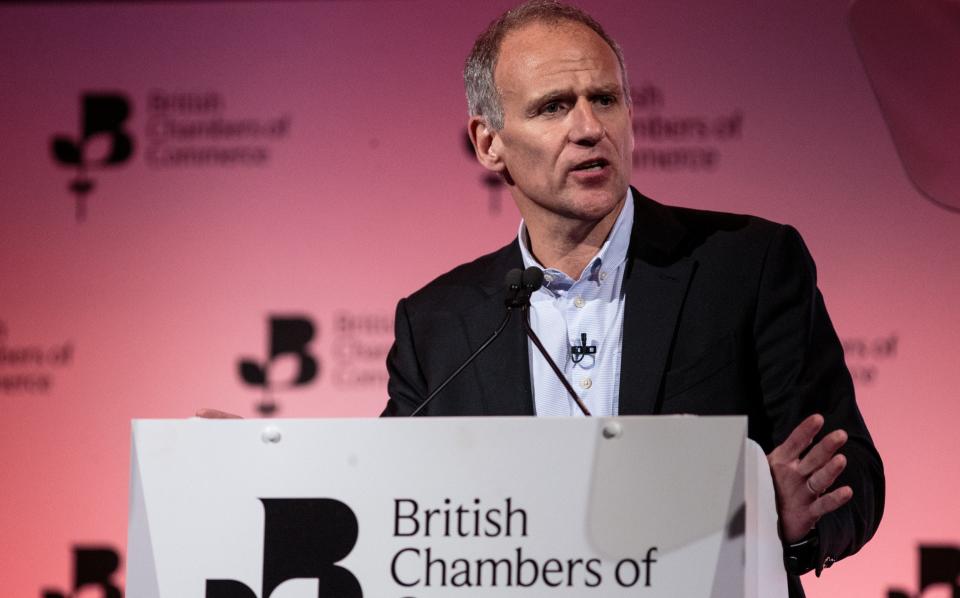The African nation that could be the world’s first renewables superpower

About 70 miles from Marrakesh, on the edge of the Sahara desert, thousands of mirrors are arrayed into circular patterns, focusing the sun’s rays onto an 800-foot tower at their centre.
The dazzling facility – known as the Ouarzazate Solar Power Station – is just one of the mega projects Morocco has built to take advantage of its huge solar and wind power potential.
With so much of the country covered by desert, experts believe the North African nation is poised to emerge as a renewable energy superpower on Europe’s doorstep.
The country has already established itself as a leader in renewable energy within Africa and is aiming to boost cooperation with its European neighbours, including the UK. The North African nation could become an essential partner in the race to “net zero”.
Leila Benali, the Moroccan energy transition minister, is modest about her country’s potential.
“You can use whatever adjective that you want,” she laughs when asked about its “superpower” potential, “but I don’t like big announcements. I prefer to work in silence.”
Her country’s ambition speaks for itself. Renewables already account for 40pc of Morocco’s installed power generation capacity and it is aiming to hit more than 50pc by 2030.
“I am pretty confident we will reach that,” says Benali during a meeting at her country’s embassy in London.
Today the country has about four gigawatts of installed renewables capacity, through a combination of solar, wind and hydro schemes. To reach its 2030 target it will need to triple that figure.
“This is part of a journey that started two decades ago, with the vision of His Majesty, the King,” Benali says.

Morocco’s annual economic output was about $142bn in 2021 according to the International Monetary Fund, a small fraction of the UK’s output of $3.1 trillion in the same year.
The country has also struggled to bring down poverty in the wake of the Covid-19 pandemic and the food and energy crisis triggered by the Ukraine war.
However, Benali and her colleagues in government hope renewables will help to transform their country’s fortunes in the same way oil did for Norway.
Finding new revenue sources will be crucial: Morocco is one of the most vulnerable countries in the region to the impacts of climate change, with roasting temperatures and droughts already squeezing agriculture and water supplies.
Alongside the concentrated solar power complex in the Ouarzazate basin, Morocco also plans to harvest bright Saharan sun through conventional solar panels. These can generate three times as much power in the North African country than they would in the UK.
Wind farms to harness hot desert gusts and hydroelectric plants complete Morocco’s suite of renewable energy projects.
Europe is expected to be a major export market for the country’s power. The region is scrambling to find new sources of clean energy after supplies of Russian gas were wiped from the board last year.
There are currently two electricity interconnectors and one gas pipeline between Spain and Morocco, which pass through the strait of Gibraltar. Bigger projects are in the works, including one that could create a direct link between Morocco and the UK.
The Xlinks scheme, which is chaired by former Tesco boss Dave Lewis, would generate 10.5 gigawatts of electricity from solar panels and wind turbines that cover 930 square miles in western Morocco.
It would then transport 3.6 gigawatts of power directly to the UK – enough to power seven million homes, or 8pc of Britain’s electricity needs – via a 2,300-mile undersea cable hugging the coasts of Spain and France before making landfall in Devon.

Lewis, who left Tesco just under three years ago, had hoped to get the project up and running by 2027. But he recently complained that political upheaval in Downing Street meant that timeline was now unlikely.
The Xlink project was namechecked in the government’s recent ‘Powering up Britain’ strategy and the fact it was mentioned is being viewed as encouraging by Morocco.
Benali says she welcomes the plan, which she believes “will help both countries in tackling their energy security, tackling their sustainability plans and also flexibility and agility.”
Does she want UK ministers to move more quickly?
“I think this will take some time,” she says. “It’s a sovereign decision. I’m not there to influence or put any pressure on my counterparts, because I would not want them to put any pressure on me.”
“Our role as policymakers is to decrease the cost of energy… but at the same time, it is also to build agile and resilient energy systems,” she adds.
“We don’t need other wars and other crises to remind us of the importance of collaborating with each other. We have to ensure that our economic tissues, our industrial systems, in Morocco and in the UK, are focused on doing what they do best – not worrying about access to low cost, low carbon energy.”
Some have questioned the basis of Morocco’s ambitions and whether it makes sense for the country to send power abroad when it still relies so heavily on fossil fuels itself.
In 2020, the most recent year for which figures are available, the country generated around 65pc of its electricity from coal, according to the International Energy Agency. Oil made up about 60pc of the country’s overall energy supply.
The country also imports roughly 90pc of the energy it consumes. Shouldn’t Morocco meet its own needs first?
“I don’t think it’s a trade off,” Benali says. “Since the world started consuming energy, which is the beginning of humanity, there has always been a [distinction] between trading energy [and] consuming it locally.”
Offering renewable energy for export is important for attracting “private investors, national and international,” she says.
“However, absolute priority number one is to give access to low cost, low carbon energy to Morocco.”
Benali hopes the UK can help Morocco develop some renewables projects that investors are avoiding – ironically because of climate risk.
“Some developers are reluctant to help us finance long term projects because they’re not sure about how their plants – be it wind farms, solar, or even hydro with the multiple droughts that we are facing – will perform in 15 years, 20 years’ time,” she explains.
“The business model that the electricity sector has developed over the last 30 years is being challenged.
“Today, with our friends in the UK… I want to start thinking to see how we can price climate risk to accelerate the execution, the development and execution of these renewable projects, because that’s what we need.
“We need to have a continuous pipeline of projects between now and 2040.”

 Yahoo Finance
Yahoo Finance 